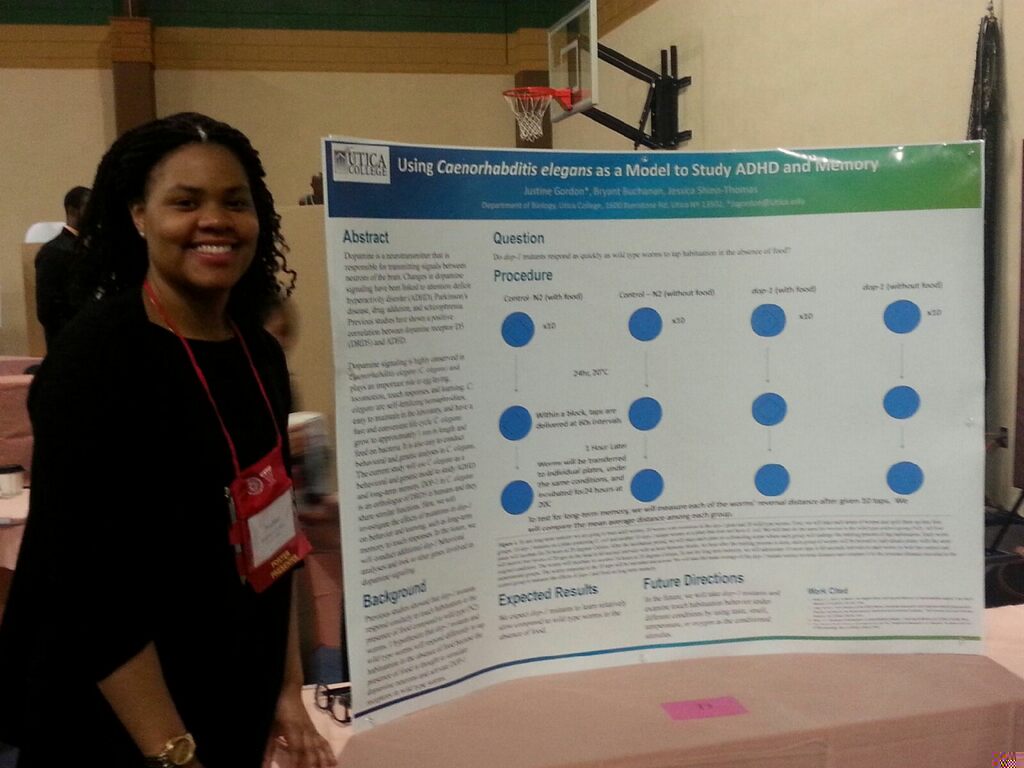
Using Caenorhabditis elegans as a Model to Study ADHD and Memory.
Justine Gordon*, Bryant Buchanan, Jessica Shinn-Thomas
22nd Annual CSTEP Conference, Bolton Landing, NY
Abstract: Dopamine is a neurotransmitter that is responsible for transmitting signals between neurons of the brain. Changes in dopamine signaling have been linked to attention deficit hyperactivity disorder (ADHD), Parkinson’s disease, drug addiction, and schizophrenia. Previous studies have shown a positive correlation between dopamine receptor D5 (DRD5) and ADHD. Dopamine signaling is highly conserved in Caenorhabditis elegans (C. elegans) and plays an important role in egg laying, locomotion, touch responses, and learning. C. elegans are self-fertilizing hermaphrodites, easy to maintain in the laboratory, and have a fast and convenient life cycle. C. elegans grow to approximately 1 mm in length and feed on bacteria. It is also easy to conduct behavioral and genetic analyses in C. elegans. The current study will use C. elegans as a behavioral and genetic model to study ADHD and long-term memory. DOP-1 in C. elegans is an orthologue of DRD5 in humans and they share similar functions. Here, we will investigate the effects of mutations in dop-1 on behavior and learning, such as long-term memory to touch responses. In the future, we will conduct additional dop-1 behavioral analyses and look at other genes involved in dopamine signaling.

